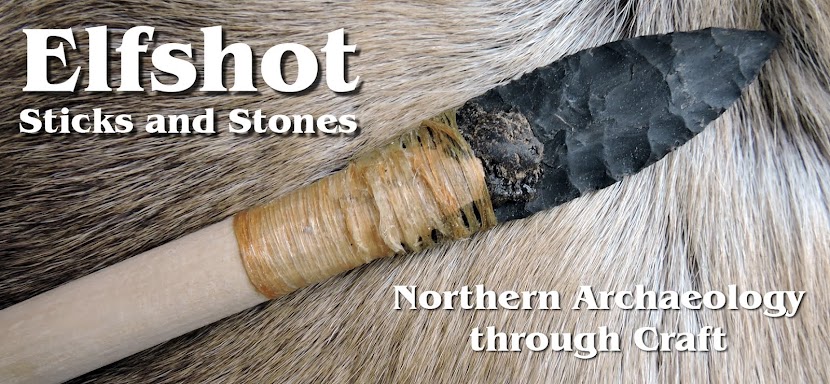 |
| A reddish brown biface |
I'm trying to wrap up the Cape Krusenstern reproductions this week. I need to ship them as soon as possible and be ready to head into the field by the end of next week. Here's a look at a couple of the most recent reproductions - a biface and a knife handle. The biface is identified in the documents that I was supplied with as belonging to the Ipiutak culture. I don't know enough about Ipiutak bifaces to know how typical it is, but I found the form interesting - it looks like a projectile point to me, although it has a rounded tip and is widest towards the tip. A bird blunt maybe?
 |
| more orangey-red |
Aside form the shape of the tool, the red chert or jasper that it is made from sets it apart from the other lithics in the collection. I used a red chert from Newfoundland that I often use for red reproductions and was happy with the results. It was a nice dark reddish brown or burgundy colour. But I also had a piece of mookaite that I picked up in Calgary in February. Mookaite is mottled red and yellow, and I found a patch of red big enough to fit one of these bifaces in. It came out a much brighter red, which also seems to be a good match for the reference photos. Its really hard to match colours from photos alone, but of the red rocks that I have available I can't really tell which is the closer match. When you see them side-by-side the darker one doesn't seem red at all. It kind of strange - if you show someone the darker one first and ask them the colour they will say "red", but after you show them the brighter stone they can't see the red colour in the first point anymore - it just looks brown. I'm not sure which one is closer to the original, but hopefully they'll both work in their separate sets of reproductions.
 |
| Two handles and two bifaces. |
 |
| Slotted knife handles |
The second piece in this batch is a knife handle with a slot for a narrow metal or stone blade at each end. Each slot also has a drilled hole associated with it. The handle is broken through the hole on one end. The original artifact looks like it was made from ivory or possibly very dense bone, but I used antler in the reproduction to avoid marine mammal parts.
Photo Credits: Tim Rast

































